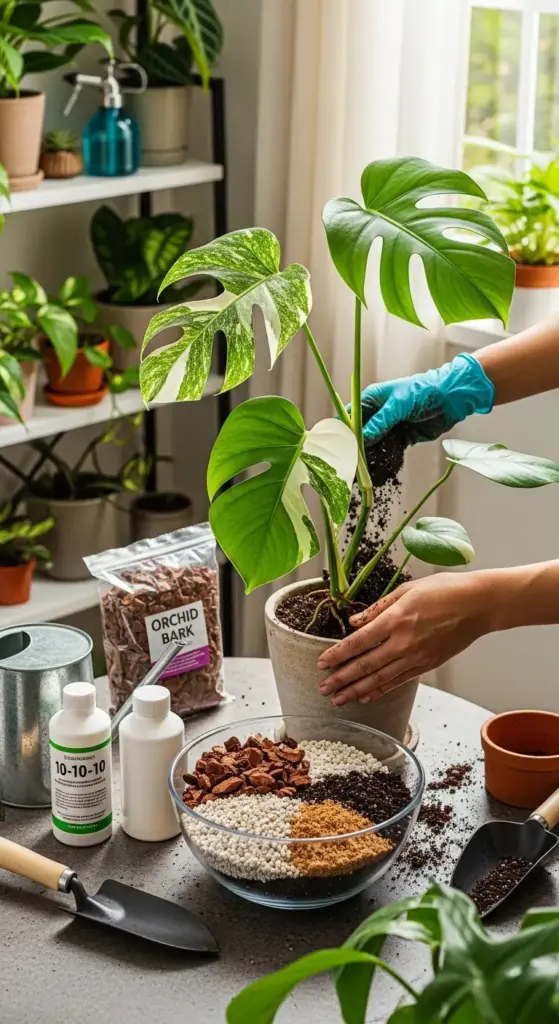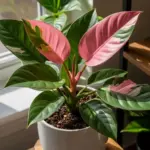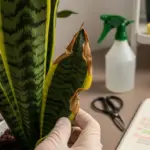4. Choose the Perfect Soil Mix and Fertilizer Combination

I used to think expensive potting soil from the garden center was automatically better. Then I watched my$300 Monstera variegata slowly decline in that “premium” mix that held water like a sponge.
Turns out, these plants are basically epiphytes in nature – they grow on trees, not in dense, moisture-retaining soil. My plant was basically drowning in what I thought was luxury.
The soil breakthrough came when I started mixing my own blend. Now my Monstera produces new leaves every 3-4 weeks with incredible variegation.
Creating the Perfect Drainage Mix
Well-draining soil is absolutely non-negotiable for Monstera variegata. I learned this after losing two plants to root rot in regular potting mix.
My go-to recipe: 40% quality potting soil, 30% perlite, 20% orchid bark, and 10% coco coir. This combo drains fast but still holds some moisture.
The perlite creates air pockets that roots love, while orchid bark mimics their natural growing environment. I buy the chunky bark, not the fine stuff.
You can find orchid bark at most garden centers, but I get mine online in bulk because it’s way cheaper.
Potting Soil Brands That Actually Work
After testing probably 15 different brands, I’ve found a few that consistently work well as the base for my custom soil mix.
Fox Farm Ocean Forest is my top choice – it’s got good drainage and doesn’t compact over time. A bit pricey but worth it for expensive plants.
Miracle-Gro Indoor Potting Mix actually works great too and costs half as much. Don’t let plant snobs shame you for using mainstream brands.
The key is what you add to it, not necessarily starting with the most expensive base soil.
Fertilizing for Maximum Variegation
Here’s where I made my biggest mistake: over-fertilizing because I thought more nutrients meant better variegation. Wrong.
Balanced fertilizer with equal N-P-K ratios works best. I use a 10-10-10 liquid fertilizer diluted to quarter strength every 2-3 weeks during growing season.
Too much nitrogen actually reduces variegation because it pushes the plant to produce more chlorophyll. Less white, more green – the opposite of what we want.
I fertilize from March through September, then stop completely during winter when growth slows down.
Organic vs. Synthetic: What Actually Works
I went through a phase where I thought organic fertilizers were automatically better for houseplants. Spent a fortune on fish emulsion and kelp meal.
The smell alone nearly got me evicted. Plus, organic fertilizers can attract gnats and other pests indoors.
Now I use synthetic liquid fertilizers for consistency and convenience. They’re easier to control, don’t smell, and give predictable results.
Jack’s Classic All Purpose has been my go-to for three years now. Simple, effective, and my plants have never looked better.
Repotting Without Plant Trauma
Repotting stress can cause variegated plants to produce less colorful leaves for months. I learned to be extra gentle with my expensive specimens.
I only repot when absolutely necessary – when roots are circling the bottom or soil stays wet for weeks.
Spring is the best time because the plant has the whole growing season to recover and establish in new soil.
I water the plant a day before repotting so the soil holds together better. Makes the whole process less traumatic for the roots.
Reading Soil and Nutrient Deficiency Signs
Compacted soil is usually the first sign it’s time for fresh mix. If water sits on top instead of soaking in, that’s your cue.
Yellow lower leaves often mean nitrogen deficiency, but don’t rush to fertilize. Check if the soil is just old and depleted first.
New leaves coming out smaller or less variegated? That’s usually a sign the soil has lost its structure and isn’t providing good root aeration.
I also watch for white crusty buildup on the soil surface – that’s salt accumulation from fertilizers and means it’s time for fresh soil.
Seasonal Soil Care Adjustments
Winter soil management is different because plants use less water and nutrients. I actually add a bit more perlite to my winter repotting mix.
Summer heat means faster drying, so I might add slightly more coco coir to help with moisture retention without sacrificing drainage.
I keep notes on what works best for each season – sounds nerdy, but it’s helped me dial in the perfect conditions.
The goal is soil that drains in 30-60 seconds but still feels slightly moist a few days later.
Fertilizer Schedule That Fits Real Life
I used to stress about exact fertilizing dates until I realized consistency matters more than precision. Now I fertilize every other Sunday during growing season.
I set a phone reminder because I’m definitely the type to forget. Missing a week here and there won’t hurt your plant.
Quarter-strength fertilizer every 2-3 weeks beats full-strength monthly applications. It’s gentler and more consistent for the plant.
I stop fertilizing completely from October through February, even if I see new growth. Winter growth is usually weaker anyway.
Think your soil game is on point? Wait until you see how proper support can transform your Monstera from a sprawling mess into a stunning architectural statement! Click “next” to discover the moss pole secrets that’ll have your plant climbing like it’s back in the rainforest – plus the training mistake that cost me my most perfect leaf!









GIPHY App Key not set. Please check settings